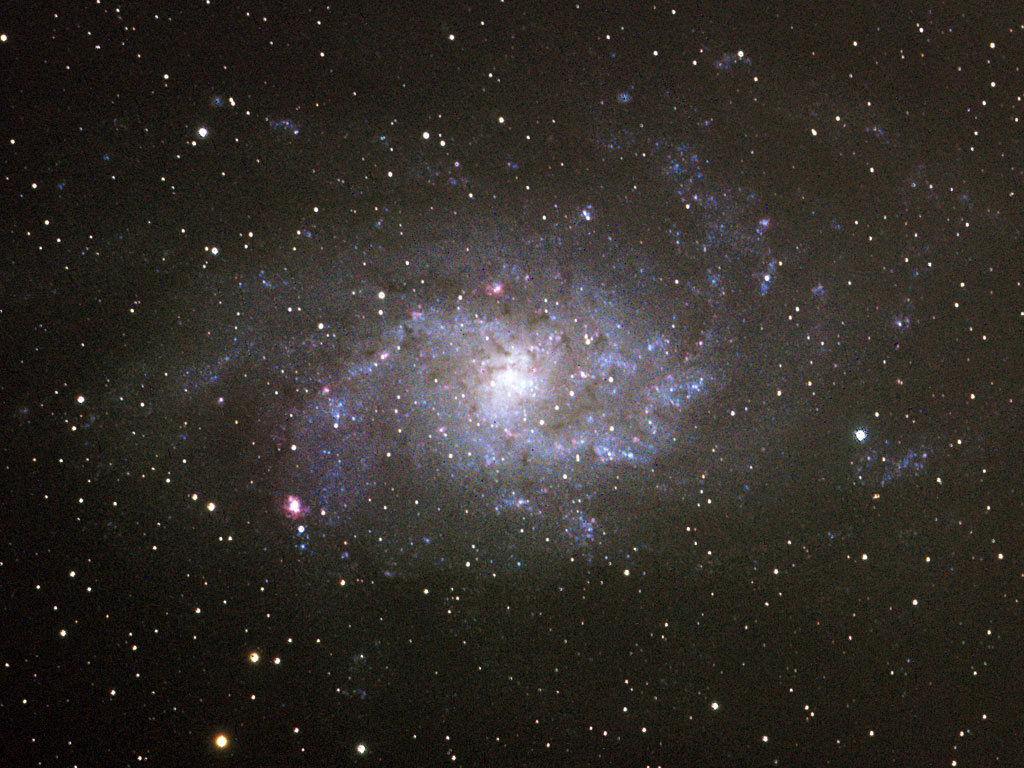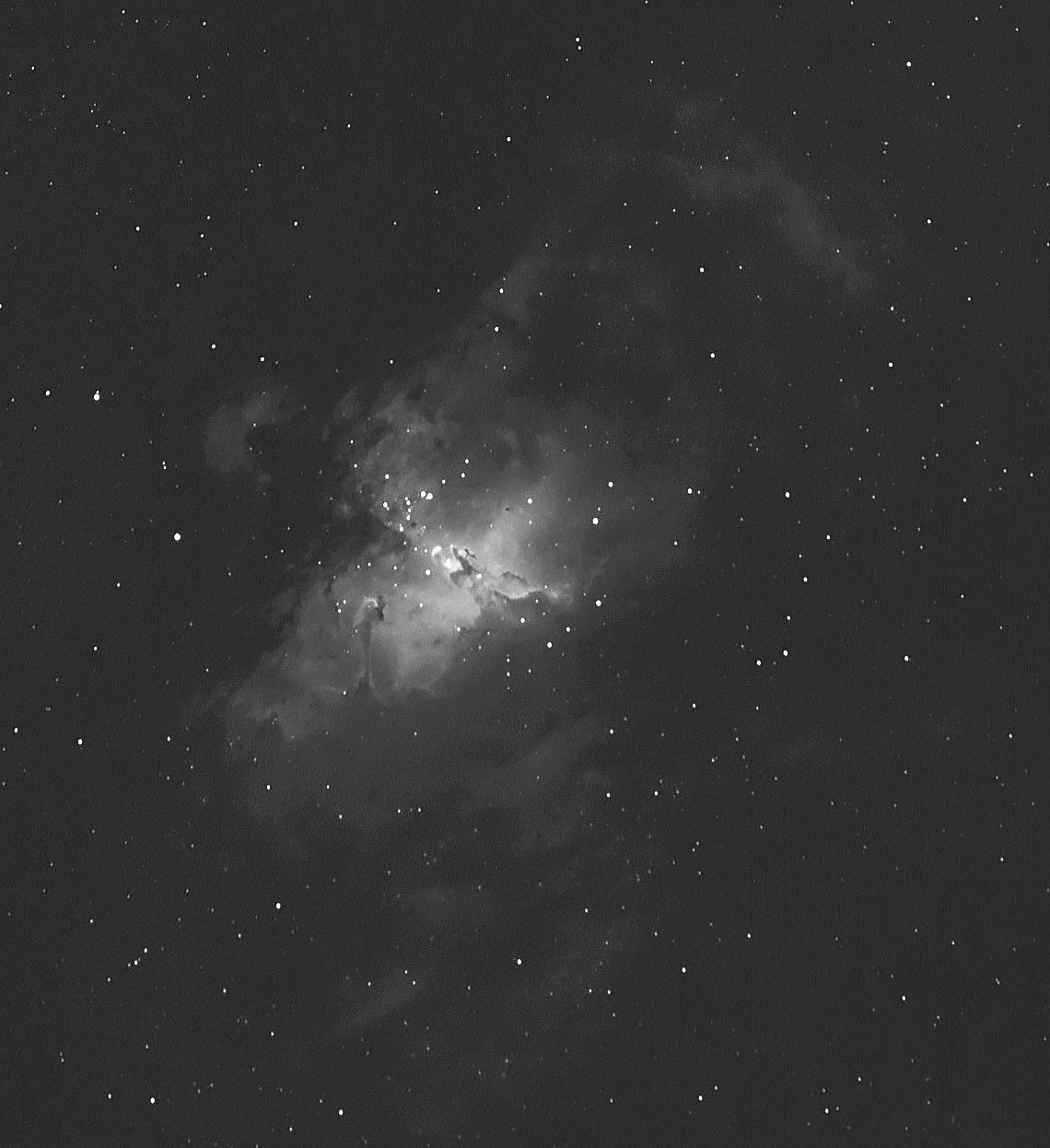September 27, 2009. M33 is a face-on spiral galaxy about 3 million light years (LY) from Earth (very near in cosmic terms) in the undistinguished constellation Triangulum. It is a member of the Local Group, which is a cluster of galaxies, including our own Milky Way, that are close enough to each other to be gravitationally bound together. The largest member of the Local Group is M31, the Andromeda Galaxy. Our galaxy, the Milky Way, is the second largest, and M33 is the third largest. M33 is about 50,000 LY across, which is about half the size of the Milky Way, and it contains perhaps 50 billion stars, compared to about 400 billion in the Milky Way. M33 is rather diffuse and has low surface brightness and it does not seem to photograph well through polluted skies (like mine). All stars that are seen overlaying the galaxy are nearby stars in the Milky Way. Only the largest telescopes are able to resolve individual stars in distant galaxies. The blue haze is the cumulative light of the billions of unresolved stars and the brownish smudges are vast dust clouds that are the birthplaces of new stars.
LRGB with an SBIG STL-11000M on a Takahashi TOA-150. Made on a Mac with Nebulosity, PixInsight, and Photoshop CS3. |

